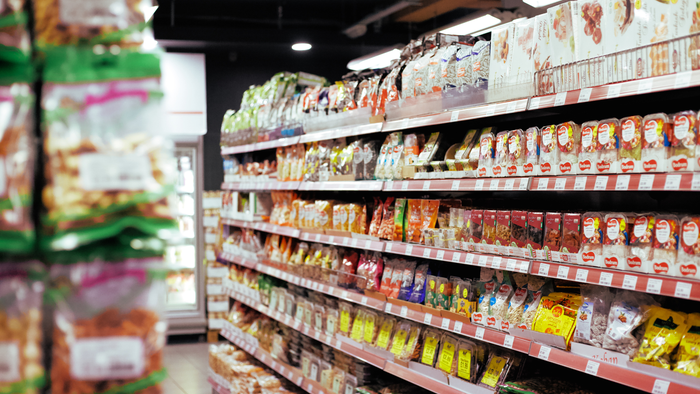Regenerative agriculture: Cultivating hype into hopeRegenerative agriculture: Cultivating hype into hope
As the term 'regenerative' gains traction on retail shelves, brands and stores are striving to balance innovation, transparency and consumer education. But greenwashing risks threaten its transformative promise.

At a Glance
- Babylife Organics debuts first regenerative-certified baby food at Whole Foods, while tackling the risk of greenwashing.
- Regenerative agriculture lacks a universal definition, creating challenges for consumer trust and marketing clarity.
- Retailers and brands invest in education and storytelling to make regenerative benefits resonate with shoppers.
Jars and pouches of the nation’s first Regenerative Organic Certified (ROC) baby food, Babylife Organics, landed on Whole Foods Market shelves in the fall. For company founder Richard Harford, the years-long journey to bring ROC baby food to market was well worth the toil and time.
His ROC baby foods don’t contain heavy metals—a big problem with many baby foods. And because they’re organic, the ingredients that go into the formulations are free from pesticides and herbicides. But the company also embraces regenerative agriculture because it “turns farms into carbon sequestration machines, and you have to bring that message to consumers,” Harford says.
Going regenerative was not easy. For Babylife, among other things, it required partnering directly with farms in Turkey. And now the company faces another hurdle: marketing. The regenerative story is complex, revolving around farming practices such as no-tilling, crop rotation and biodiversity—not exactly marketing sizzle.
At the same time, Babylife could face a more existential threat. As more brands embrace different iterations of regenerative agriculture, the term teeters on the edge of overuse and irrelevancy. Greenwashing could drain regenerative agriculture of its potential and promise—and impact retailers, and brands like Babylife, that depend at least in part on consumer passion for regenerative agriculture to drive sales.
Defining regenerative
Unlike organic, which rests on a definition backed by the United States Department of Agriculture, regenerative agriculture lacks an agreed upon definition. The definition vacuum compelled California agriculture regulators to meetings for close to two years, culminating in a meeting in November where regulators unveiled a proposed definition.
The language sparked criticism for its broadness.
“Almost anything could fall under this definition,” warned Doria Robinson, a member of the California State Board of Food & Agriculture, at the hearing, adding that it could undermine farmers and tarnish the state’s agricultural reputation.
Certifications do aim to provide clarity. Regenerative Organic Certified, for example, requires USDA Organic status as a foundation, while Regenified and Land to Market focus on outcomes, such as improved soil vitality, without prescribing methods.
But competing standards—the market today supports at least six—can confuse consumers and brands alike. “Without alignment, we cannot drive trust or awareness effectively,” says Anthony Corsaro of ReGen Brands Coalition, a trade association advocating on behalf of the regen movement.
The marketing dilemma
Concern about regenerative agriculture clarity persuaded the UK-based Advertising Standards Authority in October to issue guidelines warning against unsubstantiated regenerative claims, highlighting the need for measurable outcomes. In the U.S., consumer awareness remains low. A Purdue University survey released in November revealed over 70% of Americans are unfamiliar with the term regenerative.
Purdue University Professor of Agricultural Economic Joseph Balagtas, who conducted the survey, said the lack of awareness holds some promise—education and strong marketing could create more savvy shoppers.
But unfamiliarity, too, invites greenwashing. “Because consumers don’t know what it means, food marketers might be able to sell them a bill of goods,” Balagtas says.
Investing in regeneration
Despite challenges with consumer recognition, regenerative agriculture continues to attract investment. Rice brand Lotus Foods, for example, last year secured $22.5 million to support its regenerative rice practices. And along with investments, brands are exploring fresh avenues for storytelling. Diestel Family Ranch, for example, participated in a Utah State University study of the company’s regenerative-certified turkeys that revealed enhanced nutrient density in Diestel Family Ranch’s turkey meat, compared to conventional turkey.
The study, said company executive Heidi (Diestel) Orrock, will help Diestel broadcast the advantages—in this case, nutrient density—of regenerative agriculture to consumers.
“The beautiful thing is just showing the consumer base what regenerative means,” she says. “We could probably be doing more than we are—we could always be doing more on marketing. It’s a lot of education and storytelling for those who want to know what regenerative agriculture means, because it’s so dynamic. But trying to make that bite-sized can be a feat.”

Photo credit: Canva
The retailer role
Grocery retailers are also stepping up. Whole Foods Market carries over 150 regenerative products, supported by consumer education initiatives. Sprouts Farmers Market uses QR codes and promotional end caps to explain regenerative benefits, efforts that Scott Romano, vice president of innovation/forager at Sprouts, says are essential.
“Educating consumers is the biggest challenge,” he says.
Retail chain Natural Grocers trains staff and highlights products such as its private-label regenerative cheese in signage and using a film the company created called “Meet Your Farmer.” But as Christie Z. Pettys, product standards manager at Natural Grocers says, cost and time are hurdles. Farms converting to regenerative face years of investment before seeing returns.
Either way, the company is committed, she says. “We want to be solution-oriented and help grow the places where regenerative agriculture food products can be found.”
Whole Foods Market “cleared the decks” for Babylife Organics products after Babylife presented its heavy-metal-safe and regenerative-certified positioning, says Harford. The company agreed to an exclusive launch within Whole Foods Market. This retail support is vital for the Babylife Organics launch, Harford says. The chain is “educating consumers through end caps, special signage and in-store promotions,” he says. “Three of the first five months will include unique store personnel broadcasts to educate about Babylife and why it stands out.”
To fulfill its promise, regenerative stakeholders must address greenwashing, align standards and educate consumers. Collaboration will be essential. “Without pooling resources and working collectively, we risk failure,” Corsaro says. But with transparency and integrity, regenerative agriculture has the potential to transform farming—and consumer trust—for the better.
Read more about:
Shelf LifeAbout the Author
You May Also Like





